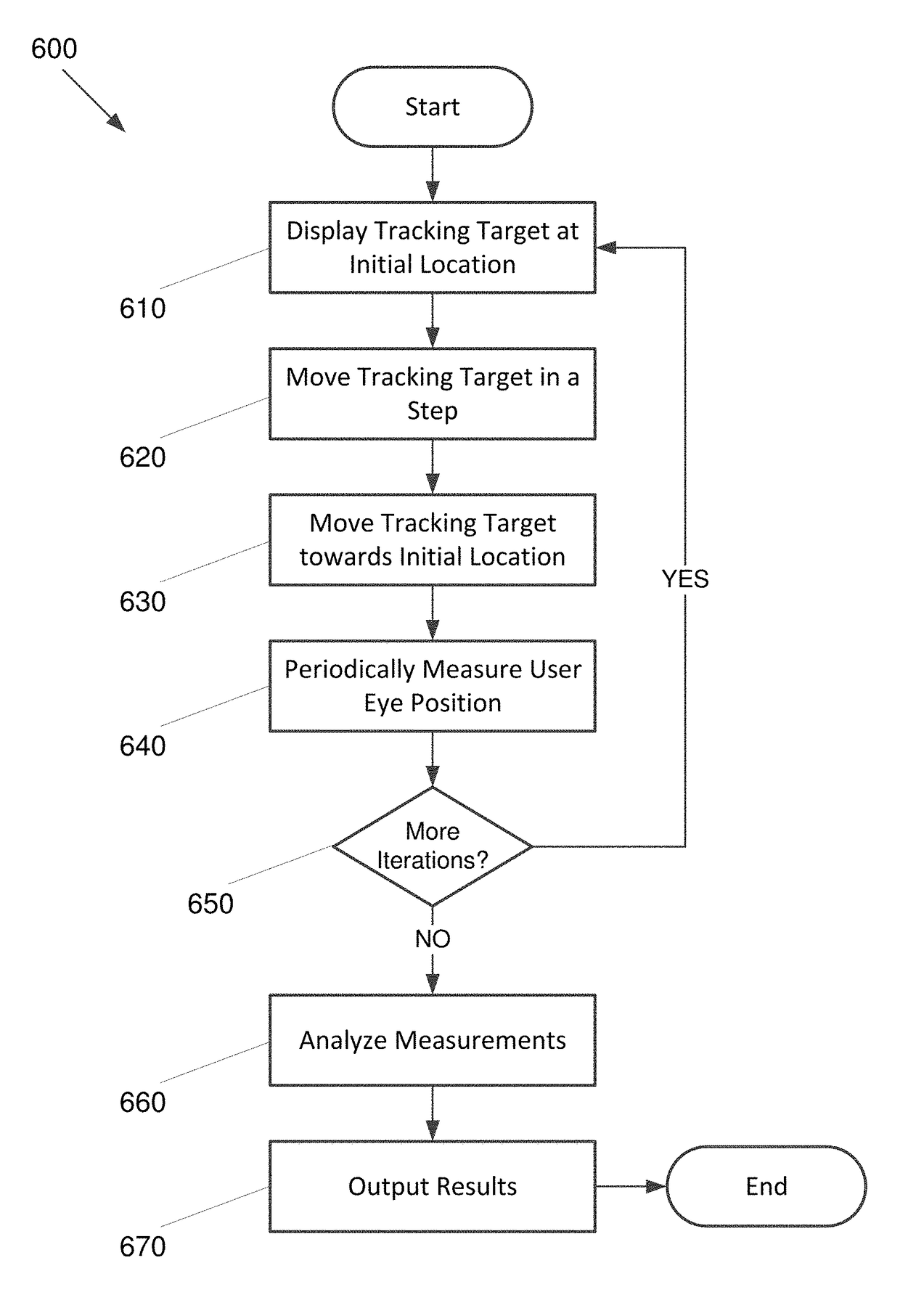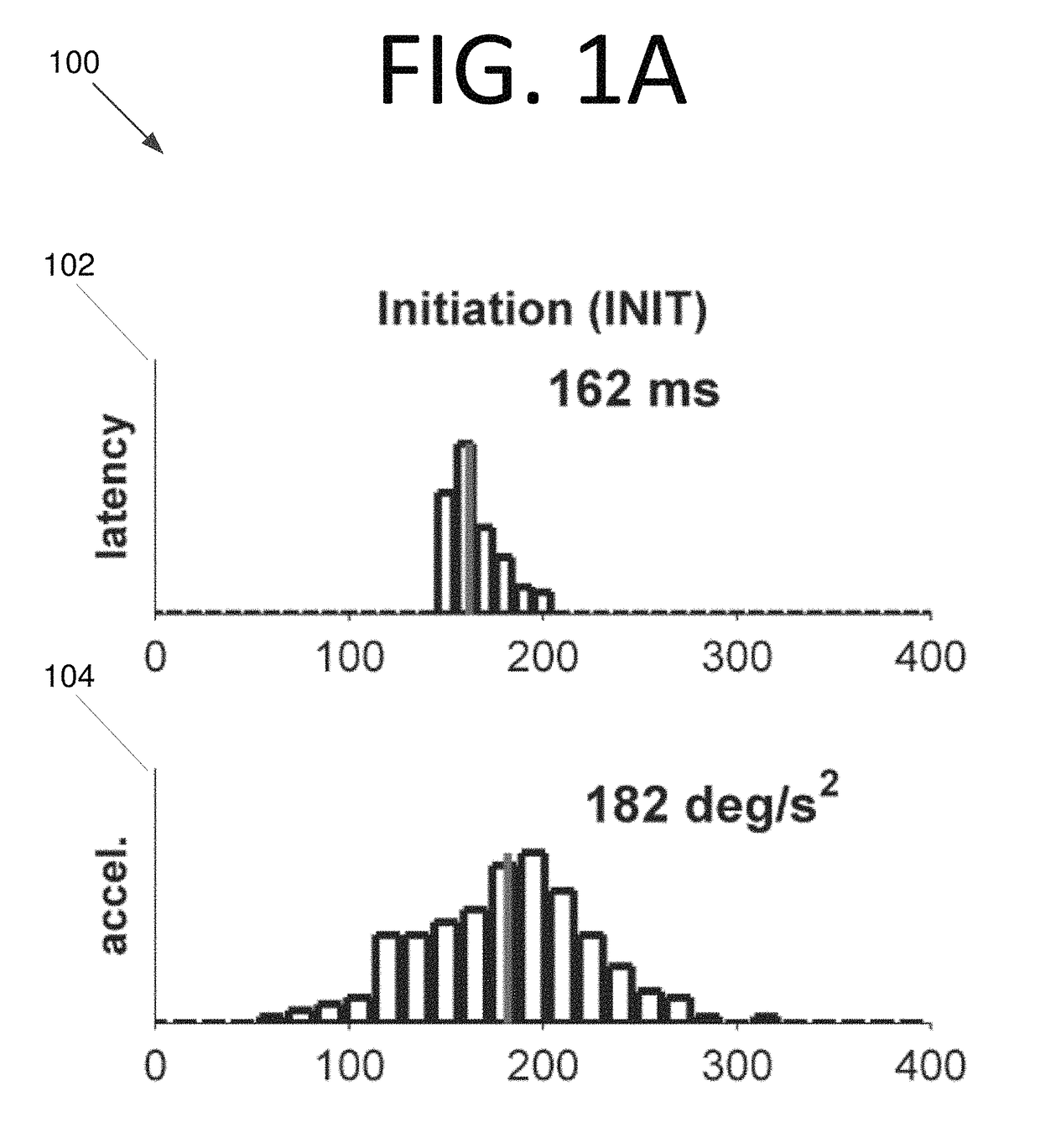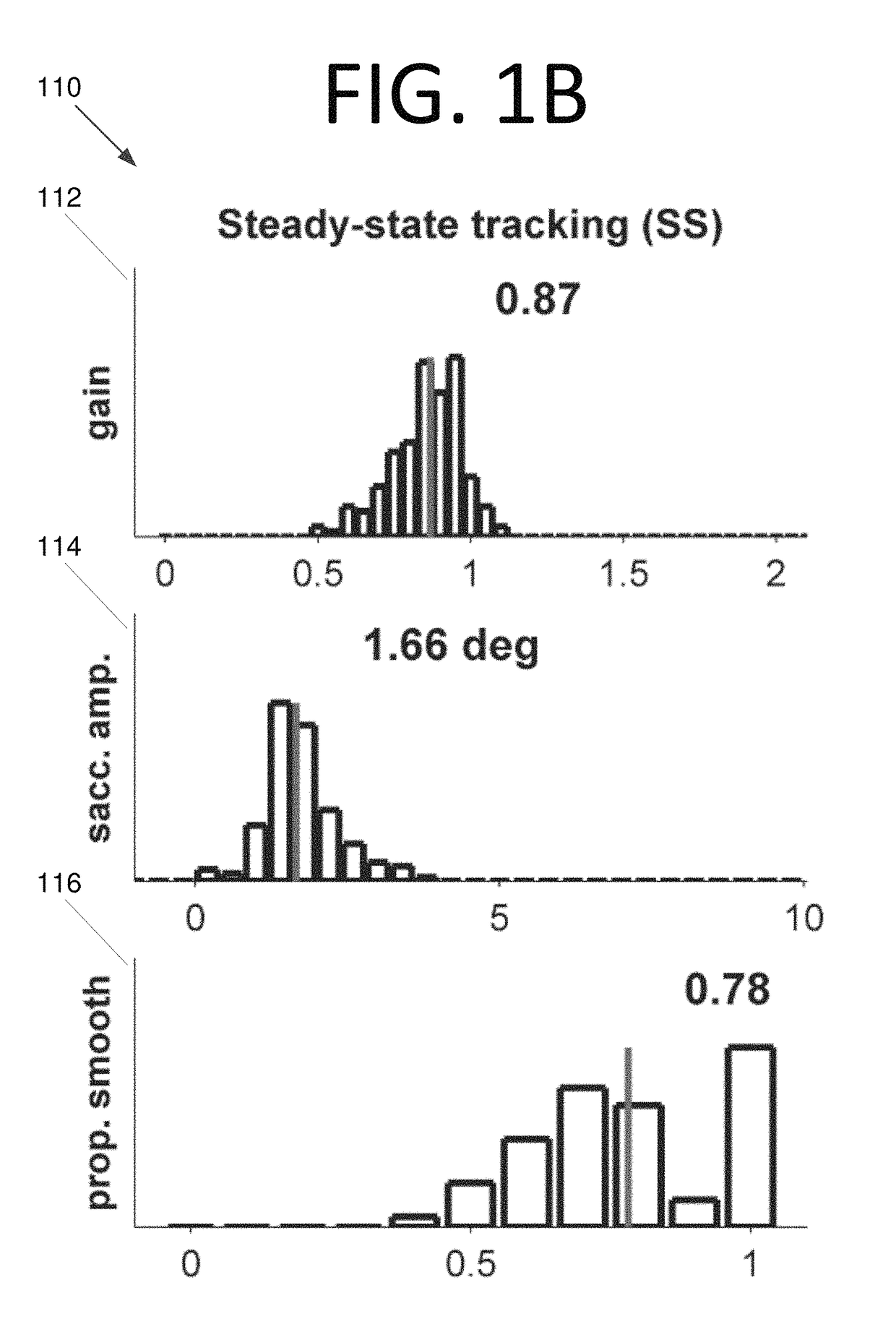Comprehensive oculomotor behavioral response assessment (COBRA)
a behavioral response and oculometric technology, applied in the field of visual assessment, can solve the problems that the dynamic and peripheral visual processing remains more difficult to clinically assess than the standard static foveal processing, and achieve the effects of high spatiotemporal precision, efficient and systematic sampling of target locations, and avoiding anticipatory motor responses
- Summary
- Abstract
- Description
- Claims
- Application Information
AI Technical Summary
Benefits of technology
Problems solved by technology
Method used
Image
Examples
Embodiment Construction
[0021]Some embodiments of the present invention pertain to an eye movement-based methodology and assessment tool that can quantify many aspects of human dynamic visual processing using a relatively simple and short oculomotor task, noninvasive video-based eye tracking, and validated oculometric analysis techniques. Using eye movement tracking presents a significant advantage over conventional assessment techniques. If standard psychophysical measures of perception and brain function are used, these studies take approximately an hour just to measure one variable, and it can take many days to measure multiple variables. Using the rapid and precise measurements afforded by eye tracking, the efficient behavioral task, and the eye movement data processing and analysis of some embodiments provides a dramatic increase in efficiency, sensitivity, and reliability over traditional psychophysics-based approaches and other conventional eye movement-based approaches.
[0022]Another significant adv...
PUM
 Login to View More
Login to View More Abstract
Description
Claims
Application Information
 Login to View More
Login to View More - R&D
- Intellectual Property
- Life Sciences
- Materials
- Tech Scout
- Unparalleled Data Quality
- Higher Quality Content
- 60% Fewer Hallucinations
Browse by: Latest US Patents, China's latest patents, Technical Efficacy Thesaurus, Application Domain, Technology Topic, Popular Technical Reports.
© 2025 PatSnap. All rights reserved.Legal|Privacy policy|Modern Slavery Act Transparency Statement|Sitemap|About US| Contact US: help@patsnap.com



